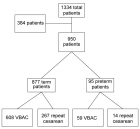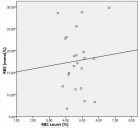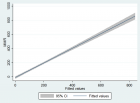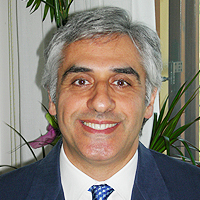About S. Camillo-Forlanini
S. Camillo-Forlanini
Articles by S. Camillo-Forlanini
Evolution of anaesthesia in transapical aortic valve implantation Running head: Anaesthesia and transcatheter valve
Published on: 20th September, 2017
OCLC Number/Unique Identifier: 7317654731
The Transcatheter Aortic Valve Implantation (TAVI) had emerged more and more in the last twenty years. According to the scientific literature, this is an approved, suitable and alternative therapeutic choice to conventional surgery for aortic valve d... isease in high risk patients. The most of patients are octogenarians or nonagenarians, with multiple comorbidities (neurological,vascular,oncologic, haematological, etc). The evolution of TAVI techniques and its devices have improved the quality of results and reduced the peri- and post-procedural complications. Cardiac anaesthesia and analgesia in TAVI patients is very important and fundamental to a quickly and complete clinical restoring after the procedure. An optimal balance of drugs and peri-procedural management could reduce the neurological events (such as delirium), the days of hospitalization and the admission of intensive care unit. According to our experience in transapical approach, the low dose of propofol and desflurane allowed to optimal cardiac anaesthesia and rapid mechanical ventilation weaning in complex patient undergone to transcatheter valve implantation with transapical approach. Moreover, our protocol reduced considerably the incidence of perioperative delirium. Show more >
Theranostics: A Unique Concept to Nuclear Medicine
Published on: 22nd February, 2017
OCLC Number/Unique Identifier: 7666336030
Nuclear Medicine is an integral part of modern healthcare. The use of radioactive nuclides tagged biomolecules, evaluating their distribution in human bodies by SPECT or PET systems, provides longitudinal sets of volumetric and quantitative images th... at can be used to diagnose a wide range of disease and/or assess response to disease specific treatments [1]. Show more >
The revolution of cardiac surgery evolution Running head: Cardiac surgery evolution
Published on: 28th August, 2017
OCLC Number/Unique Identifier: 7317598809
From the first case of primitive cardiac surgery (CS), treatment of stab wound of the heart (Dr. Daniel Hale Williams, 1893), to recent surgical procedures and device implantations for end-stage heart failure (HF), the CS has grown and emerged in the... public health more and more [1].
The heart valve disease had interested immediately since the non-cardiopulmonary era because of the multitude of rheumatic patients and congenital valve disease. In the 1952, Hufnagel implanted the first valve in descending aorta and it was the sign of the first step of the CS evolution. New prosthesis and heart valve techniques were tested between 1970 and 2000 with optimal results in patients’ quality of life and survival, at the same time of CPB evolution.
Whilst, the evolution of heart valve surgery had stimulated new devices, prosthesis and the development of minimally invasive surgery, this was partially diminished by the spreading of trans catheter valve implantation. In the 2002, Dr. Alain Crabbier described a non-surgical prosthetic valve implantation firstly: it was the revolution of CS evolution [2]. The transcatheter valve implantation has evolved and spread rapidly with multiple approaches femoral to apical, aortic, axillary and carotid, and many suitable and technological devices. The higher and higher risk patients, the needs to avoid surgical complications, the evolution of available devices and the fabrication of new technologies have increased the efforts to improve trans catheter valve implantation [3].
The recent article of Loyalka et al, described a special case of tricuspid valve in valve replacement with Sapien 3, an innovative and alternative therapeutic choice to a tricuspid valve degeneration [4]. Instead, Sawara et al [5], documented as trans catheter aortic valve implantation for a failing surgical bio prosthesis or native aortic valve regurgitation has become an alternative for patients at high risk for redo surgical aortic valve replacement or aortic regurgitation since now off-label: that was a reliable and significant results in the era of trans catheter valve implantations.
What would we attend from the future? In the most surgical centres, the trend were a significant decrease in patients undergoing to open-heart valve surgery compared to trans catheter valve implantation.
Maybe the new ongoing studies of lower and mild-risk patients undergone to transcatheter procedure would open either a deeper collaboration of the heart team and a new therapeutic perspectives in the public health with a shift to more minimally invasive procedures, less day of hospitalization and I don’t see why not less costs for public health. Show more >

HSPI: We're glad you're here. Please click "create a new Query" if you are a new visitor to our website and need further information from us.
If you are already a member of our network and need to keep track of any developments regarding a question you have already submitted, click "take me to my Query."



















































































































































